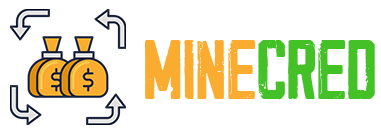In today’s fast-paced world, Americans are increasingly turning to technology to enhance their debt management strategies. Whether through apps, online platforms, or financial tools, individuals are finding innovative ways to take control of their finances and reduce their debt burdens. Let’s explore some of the ways technology is helping people achieve better financial health and manage their liabilities more effectively.
Mobile Apps and Budgeting Tools

Financial management apps have become essential tools for many Americans. These applications allow users to track their spending, set budgets, and receive alerts when they approach their limits. By providing real-time insights, these tools make it easier to stay on top of finances.
Popular apps like Mint, YNAB (You Need A Budget), and PocketGuard offer comprehensive features that help users plan their expenses and prioritize debt payments. These apps can link directly to bank accounts and credit cards, offering a seamless experience for monitoring transactions and balances.
By integrating such tools into daily routines, individuals can gain a clearer picture of their financial situation and make informed decisions about reducing their liabilities.
Automated Savings and Payments
Automation is another technological advancement that is aiding in effective debt management. Many financial platforms offer options for automatic savings and bill payments. This ensures that individuals consistently allocate funds toward their debt without the risk of forgetting or delaying payments.
Services like Digit and Chime use algorithms to analyze spending patterns and automatically divert small amounts into savings or debt repayment accounts. This method not only simplifies the process but also makes it painless to save money and pay off debts progressively. By leveraging automation, users can build good financial habits effortlessly, thereby gradually reducing their debt over time.
Debt Reduction Calculators
Online debt calculators and repayment planning tools are invaluable for anyone looking to create a systematic plan for paying off liabilities. Websites such as Credit Karma and Bankrate provide calculators that project the time and money needed to eliminate debt based on variables like interest rates and payment frequency.
These tools can simulate various repayment scenarios, helping users understand the best strategies for their situations. By visualizing the impact of different payment plans, individuals are better equipped to choose the most efficient path to becoming debt-free. Overall, these calculators serve as a roadmap for debt repayment, guiding users towards financial freedom with clearer, data-driven plans.
Online Financial Education
The internet is a treasure trove of resources for financial education. Websites, blogs, webinars, and online courses are readily available to provide advice on managing debt and improving financial literacy. Empowering individuals with knowledge is a crucial step toward effective debt reduction.
Platforms like Khan Academy, Coursera, and YouTube offer courses and tutorials on personal finance topics ranging from budgeting to investing. By educating themselves, users can make more informed decisions and develop better financial habits.
Accessible online education enables individuals to understand the intricacies of debt repayment, interest rates, and credit scores, making them more adept at managing their financial health.
Peer-to-Peer Lending and Crowdfunding
Peer-to-peer (P2P) lending platforms are providing alternative ways for Americans to manage and consolidate debt. Platforms like LendingClub and Prosper allow individuals to borrow money at potentially lower interest rates compared to traditional financial institutions.
These platforms connect borrowers directly with investors, eliminating the intermediary and often resulting in more favorable loan terms. For those struggling with high-interest debt, P2P loans can offer a viable solution for consolidation and reduction.
Additionally, crowdfunding has emerged as a means to raise funds for specific financial goals, including debt repayment. Websites like GoFundMe enable individuals to seek support from friends, family, and even strangers to alleviate their financial burdens.
Credit Monitoring Services
Another technological tool aiding debt management is credit monitoring services. These services, provided by companies like Experian, Equifax, and TransUnion, allow users to keep track of their credit scores and report any discrepancies.
By staying informed about changes in their credit profiles, individuals can take proactive steps to address issues that might negatively impact their ability to manage debt. Monitoring services also offer alerts for any unusual activities, helping to prevent identity theft and fraud. This vigilance can lead to better credit health, making it easier to secure favorable loan terms and manage existing debt more effectively.



